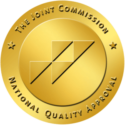EMDR Therapy for Addiction in Idaho
When someone is struggling with addiction, the causes and patterns can often feel confusing and overwhelming. Often, there are deeper reasons behind someone’s circumstance with substance abuse, such as trauma or painful memories. As a result, the disease becomes an unhealthy cycle.
Mental health professionals have developed many ways to address both addiction and trauma together. One approach that stands out is EMDR therapy, a method designed to help process and heal from distressing experiences.
At Eagle Creek Ranch Recovery in Nampa and Boise, Idaho, we understand that addiction often stems from unresolved trauma and painful experiences. Our comprehensive treatment approach includes EMDR therapy as part of our commitment to helping men achieve lasting recovery by addressing the root causes of their substance use.
Dr. Francine Shapiro developed EMDR therapy in the 1980s after she noticed that certain eye movements could help people feel less troubled by difficult thoughts and memories. Unlike traditional talk therapy, which involves discussing thoughts and feelings in detail, EMDR uses a structured process with guided eye movements or other rhythmic stimulation while focusing on specific memories.
Originally, EMDR therapy treated post-traumatic stress disorder (PTSD). Over time, it expanded to help with other conditions, including EMDR therapy for addiction. This approach helps people address both the triggers and intense emotions behind substance use, offering recovery that considers the whole person.
The therapy works by helping your brain reprocess traumatic memories so they lose their emotional charge. Instead of feeling overwhelmed by painful memories, you can think about them without the intense fear, anger, or sadness that once drove you to use substances.
The Connection Between Trauma and Addiction

There’s a strong connection between trauma and substance abuse that goes deep into brain chemistry and behavior. Trauma is an emotional response to a disturbing or stressful event. When trauma isn’t fully processed, it affects how your brain and body manage stress, emotions, and decision-making. In other words, trauma can impair a person’s ability to regulate their emotions, feel safe, and self-soothe.
Research shows that up to 75% of people receiving addiction treatment report histories of trauma. According to a study published in BMC Psychiatry, nearly half of individuals diagnosed with PTSD also meet the diagnosis criteria for a substance use disorder, and vice versa, men with addiction have also experienced trauma.
Unprocessed trauma creates vulnerability to addiction. People turn to drugs or alcohol as “self-medication,” using substances to temporarily manage painful emotions or memories. This cycle makes it difficult to stop using substances even when negative consequences develop. Here’s how trauma affects addiction:
- Brain chemistry changes: Trauma affects the same neural pathways involved in addiction, including areas responsible for pleasure, reward, and stress response.
- Self-medication: Many individuals with trauma histories turn to drugs or alcohol to numb the psychological pain, anxiety, or other distressing symptoms associated with their experiences. Substances become tools for emotional regulation, helping people temporarily reduce anxiety, sadness, or fear related to trauma.
- Dependency cycles: While substances provide short-term relief from trauma symptoms, repeated use creates physical and psychological dependence
The presence of both PTSD and addiction makes diagnosis and treatment more complicated, as symptoms of various conditions can often mimic one another. As a result, individuals often experience more severe symptoms, poorer outcomes, and a higher risk of relapse.
As a form of trauma therapy, EMDR addresses both trauma memories and the patterns supporting ongoing substance use. This approach recognizes the complex relationship between trauma, addiction, and behavior.
Contact Eagle Creek Ranch
Recovery Today!
Why Wait? Find The Help You Need By Reaching Out To Us Today! Our Admissions Team Is Standing By.
How EMDR Helps Treat Substance Use Disorders
Standard EMDR protocols were created to help people process trauma. These protocols have been adapted for addiction treatment by focusing on both traumatic memories and addiction-related triggers. In EMDR for addiction, therapists identify memories of painful events and specific situations, feelings, or thoughts that commonly lead to substance use.
A key concept in EMDR addiction treatment is the “addiction memory network.” This refers to how your brain links memories of substance use with feelings of relief, reward, or escape. These networks can trigger cravings or automatic behaviors when you encounter certain people, places, or emotions.
EMDR targets both trauma memories and addiction-specific triggers using bilateral stimulation (guided eye movements, tapping, or sounds) while you recall these memories or triggers. This process helps your brain reprocess how these memories are stored, making them less distressing and reducing the urge to use substances in response. The therapy follows eight structured phases:
- History gathering: Your therapist assesses trauma history and substance use patterns
- Preparation: You learn stabilization techniques and coping skills
- Assessment: Together, you identify specific memories and triggers to target
- Desensitization: Bilateral stimulation helps reprocess distressing memories
- Installation: Positive beliefs replace negative self-concepts
- Body scan: Physical sensations are checked and processed
- Closure: Each session ends with stabilization techniques
- Reevaluation: Progress is assessed and treatment adjusted as needed
This process is specifically adapted to address both the underlying trauma and learned associations that maintain addiction cycles.
EMDR for Alcoholism and Other Addictions

EMDR therapy adapts its protocols for different types of addiction, recognizing that each substance and behavioral pattern requires specific approaches. The therapy targets the unique triggers, memories, and emotional responses linked to each addiction type.
For EMDR for alcoholism, therapists focus on memories and situations that trigger the urge to drink. These protocols identify specific events, emotions, and thoughts linked to alcohol use. During sessions, you recall these triggers while using bilateral stimulation like guided eye movements.
A 2022 clinical trial found that people who received EMDR for alcoholism experienced significant decreases in alcohol cravings compared to those receiving standard counseling alone. The therapy targets “addiction memory networks”—brain pathways connecting alcohol use to feelings of relief or reward. EMDR also addresses other addictions effectively:
- Opioid addiction: Sessions may focus on memories of physical pain, withdrawal symptoms, or medical events that led to opioid use
- Stimulant addiction: The therapy often targets memories related to high-stress situations, performance pressures, or cycles of intense energy and crashes
- Prescription drug misuse: EMDR protocols may address medical trauma, loss, or changes in health status
For EMDR for sex addiction, the therapy uses adapted protocols to address compulsive sexual behaviors. Therapists help identify memories, images, or fantasies that trigger compulsive urges. The therapy works to weaken associations between triggers and compulsive actions while addressing underlying shame or negative beliefs about self-worth.
Evidence and benefits of EMDR therapy for addiction
Recent research demonstrates EMDR’s effectiveness for addiction treatment. Individuals with substance use disorder and trauma who received EMDR showed larger reductions in cravings and PTSD symptoms than those receiving standard counseling alone.
Studies from 2022-2024 report that people treated with EMDR experience significant reductions in substance cravings and improvements in mood and coping skills. Participants receiving EMDR for addiction were less likely to relapse at three- and six-month follow-ups compared to those receiving treatment as usual. Key research findings include:
- Reduced cravings: EMDR decreases both frequency and intensity of substance cravings
- Improved emotional regulation: People develop healthier ways to manage stress, anxiety, and other emotions without substances
- Relapse prevention: Processing triggers and distressing memories lowers the risk of returning to substance use
- Dual diagnosis treatment: EMDR addresses both trauma-related symptoms and addiction simultaneously
According to the National Institute on Drug Abuse (NIDA), addressing co-occurring mental health and substance use disorders together improves treatment outcomes significantly.
Limitations and considerations

EMDR therapy isn’t appropriate for everyone. People experiencing severe dissociation, active psychosis, acute suicidal thoughts, or severe cognitive impairments may not be candidates for EMDR. Those with very high distress levels or an inability to maintain basic emotional stability might find EMDR challenging or overwhelming.
During EMDR sessions, temporary discomfort is common. Emotional distress, vivid memories, or strong physical sensations may arise as your brain processes past experiences. These reactions are expected and usually decrease over time, but they can be intense. Important considerations include:
- Stabilization requirements: Some level of sobriety or emotional stability is often necessary before beginning EMDR to reduce overwhelming feelings or relapse risk
- Professional expertise: EMDR for addiction requires therapists with specialized certification in both EMDR and addiction treatment.
- Comprehensive approach: EMDR works best as part of an integrated treatment combining medical support, counseling, and relapse prevention strategies
Your Path Forward With EMDR Therapy
EMDR therapy for addiction offers a structured approach addressing both traumatic memories and addiction-related triggers. The therapy uses guided eye movements or bilateral stimulation to help your brain process distressing experiences and reduce substance use urges.
When starting EMDR therapy, you’ll meet with a trained mental health professional who gathers your personal history and explains the process. Sessions begin with preparation and skill-building to ensure emotional stability. Over time, sessions focus on processing specific memories and triggers using bilateral stimulation techniques.
Qualified EMDR providers have specialized training in both EMDR protocols and addiction treatment. Certification comes through recognized organizations, and many therapists hold licenses in counseling or clinical social work. You can find providers through the EMDR International Association website or consult local treatment centers offering trauma-informed care.
At Eagle Creek Ranch Recovery in Idaho, EMDR is integrated into our comprehensive treatment plans for men struggling with addiction and co-occurring mental health concerns. Our trained clinicians work collaboratively with clients, pairing EMDR with cognitive behavioral therapy, group counseling, and holistic wellness practices in our supportive environment.
EMDR Therapy for Addiction Treatment FAQs
EMDR therapy for addiction usually takes 8-12 sessions to show initial results, though some people may need several months of treatment depending on trauma complexity and individual progress.
Many insurance plans cover EMDR therapy as part of behavioral health benefits, but coverage varies by provider and specific plan details.
EMDR therapy shows promise for people with multiple relapses, especially when unresolved trauma contributes to their addiction patterns.
EMDR therapy focuses on processing distressing memories using bilateral stimulation, while cognitive behavioral therapy emphasizes changing thought patterns and behaviors through discussion and skill-building.
Look for therapists with formal EMDR certification from accredited training programs, plus specialized experience in addiction treatment, along with state licensure as mental health professionals.
At Eagle Creek Ranch Recovery, we understand the complex relationship between trauma and addiction. Our qualified EMDR specialists help you address the root causes of your substance use disorder in our supportive Idaho facility. Contact Eagle Creek Ranch Recovery today to learn how our EMDR therapy program can be part of your comprehensive recovery plan.

Clinical Director
Kendall Maloof is the clinical director at Eagle Creek Ranch Recovery. She is a licensed marriage and family therapist and has held multiple leadership roles before settling here at Eagle Creek Ranch Recovery. Kendall received her master’s degree in marriage and family therapy from the Chicago School of Professional Psychology in 2016. Her career in mental and behavioral health began in 2014 when she took up internships in both the nonprofit and for profit sectors. She interned at multiple reputable companies, such as The Living Success Center and 449 Recovery in California.
In 2019, Kendall became the clinical director of Sunsets Recovery for Woman, a dual diagnosis program in southern California. Kendall is a natural leader. She has an incredible ability to problem solve and stay calm in any situation. Kendall never fails to show up when she is needed, and her calm demeanor makes her team and clients feel at ease. Eagle Creek Ranch Recovery is proud to have Kendall as our clinical director.


